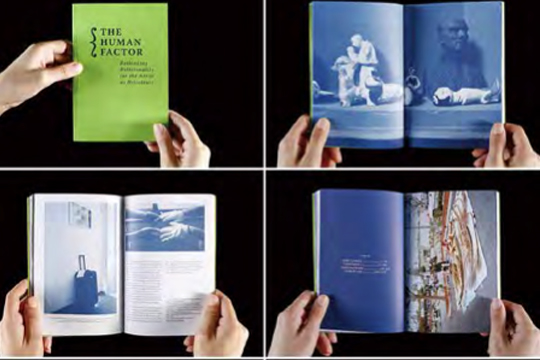THE HUMAN FACTOR
| 2013年05月10日 | 发表于 LEAP 19

WHY RETHINK RELATIONALITY now? The recent surge of relational practice and community-oriented art in China seems to be finally subsiding even as critical interest in such work is transferred into the scope of nouveau institutional critique. Indeed, editor of this volume and curator of the attendant exhibition Bea Leanza notes early on in her introductory text that the question here is in fact how to push relationality past the popular critical discourses of the 1990s, bringing relational concepts beyond participation, conviviality, and community-building to art today. In the work of the artists, curators, and critics contributing to this project, the major shared thread seems to be that of personal interconnectedness and the maintenance of intersubjectivity despite or in the face of broader matrices of political, financial, and technical power. Indeed, in opposition to first-wave relational aesthetics, here the notion of relations is understood as the cement not only between person-to-person interactions but also in the interstices and cleavages of objects and actors.
Oddly enough, the text cites theorists like Jane Bennett, one of the major pillars of if not a personal adherent to object-oriented philosophy, as evidence of the primacy of relations in these new practices of artist-object imbrication. I am compelled to ask the project to move a step further: what is related now, in order to make relations relevant again, is not a relationality extended only to the space between people and things but also to the unexplored territories of things alone, the societies and ecologies of thinghood that might yet escape our anthropomorphizing idea of the interpersonal. At stake here is the ongoing feasibility of cognitive mapping, for if the recuperation of relationality is to bear any political consequence it must allow us a way of seeing connections beyond ourselves and our circles, beyond the pleasant but impotent conviviality of person-to-person and person-to-object exchanges.
Moving into the core of the book, composed of two essays and two interviews, or one long text per artist participating into the exhibition, we would expect to find an exposition of practice truly and empathically interested in the world of things. Instead, there seems to be an excess of intentionality, and perhaps rather more allusion to relational aesthetics than to relationality in general. If anything, artists Koki Tanaka, Liang Shuo, Hong-Kai Wang, and Charles Lim seem to believe above all else in a shared social space of action; Tanaka and Liang populate it with affective and socially-engaged objects, sometimes human and sometimes inanimate, while Wang and Lim are more concerned with mapping the space itself, setting the groundwork for certain relations.
In a way, the project is thus a staging of pure relationality: following Mami Kataoka in her analysis of Koki Tanaka, the exhibition and this publication give form to the implicit relations between objects, forefronting the encounter with the thing rather than the thing itself. From the suitcases Tanaka left in public spaces with tags listing as the return address the site of the exhibition to Liang’s temporary sculptures composed of gaudy plastic objects reflecting the highly localized taste of actors in the global manufacturing system, and from Wang’s casting of a performance of her own conversation with another composer to Lim’s photographs of structures and positions along the maritime borders of Singapore from both sides of the invisible line, the art object emerges as a very particular kind of thing— the event. Here the art object is not a normal object because it is bounded in time as much as in space, appearing only when it is called into being by a certain set of relations and then receding back into its constituent objects at the far end of experience. Relational aesthetics may be sterilized and disowned, but the tyranny of relations continues so long as it is the person-to-person experience of human relationality that is reified to the exclusion of the world of things beyond. (Translated by Frank Qian)


